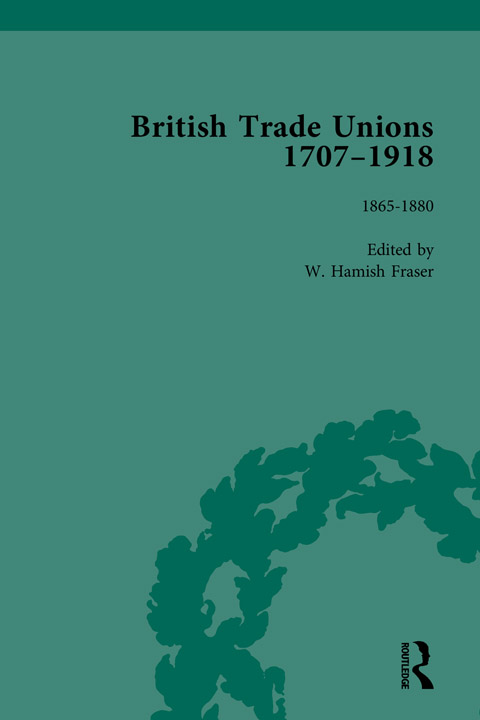Access to the full content is only available to members of institutions that have purchased access. If you belong to such an institution, please log in or find out more about how to order.
Loading content
We were unable to load the content

British Trade Unions, 1707-1918, Part II
- Edited by
- W. Hamish Fraser
- Published: 2008
- DOI: 10.4324/9781851968312
- Set ISBN: 9781851968312
Features 8 volumes of British Trade Unions 1707-1918, reproduced in facsimile, showing the many significant pamphlets, essays, articles and letters from this important period in British history. Presented chronologically, the texts re-map the history of the trade union, contextualising its development from inception through to the 20th Century.
Set Contents
There is still a great deal of room for debate over the causes of the spectacular expansion of trade unionism at the end of the 1880s and in the early 1890s. The rising standard of living of most people as a result of sharply falling food prices certainly helped. It gave many less skilled workers, for the first time, a margin of existence above subsistence. The emergence of socialism, partly as a result of influences from continental Europe and partly as a result of intellectual dissatisfaction with Liberalism, certainly also played its part. There was also a new sense of political power among groups of workers. The Franchise Reform Act of 1884 gave the vote to many miners and farm workers for the first time and the accompanying Redistribution Act created much more socially segregated single-member constituencies in the cities. MPs of working-class origin found their way into Parliament and the demand for more labour representation began to build. Increasingly, as local Liberal Associations failed to respond to the demand and to choose working-class candidates, there was talk of independent labour.
Court decisions hostile to trade unions in the 1890s began with the case of Temperton v. Russell in 1893 when Hull unions were forbidden to try to stop Temperton delivering goods to another firm where there was a dispute. While unions were free from the charge of criminal conspiracy, officials were liable for damages for a civil conspiracy. Blacklisting of employers was also declared illegal. The legal case of Lyons v. Wilkins between 1896 and 1898 tightened what could be done by pickets during strikes. The difficult to define action of ‘watching and besetting’ was illegal. The spate of cases culminated in the Taff Vale judgement that reached the Law Lords in 1901, costing the Amalgamated Society of Railway Servants £30,000 in damages and costs. The Taff Vale Railway Company sued the union as a body, and the Law Lords reversed an earlier decision of the court of appeal and accepted that the union was a legal entity capable of being sued. A few weeks later, in Quinn v. Leathem, the Lords granted damages against the Belfast Butchers’ Association for conspiring to damage Leathem, by threatening strike against his customers. The Association had tried to persuade them to impose a boycott on Leathem to get him to dismiss his non-union assistants.
The strikes of 1911 seemed to bring a renewed faith in the value of organization. Union membership began a rise that was to continue through until 1920: from two million in 1906 to over four million by the outbreak of war and to 6.5 million in 1918. Women workers too were caught up: from a quarter of million in 1907, female union membership rose to 1,200,000 in 1918. There were bitter strikes of women at the Singer Sewing machine factory in Clydebank in 1911 in protest at the effects of new management methods. In this strike there was support from male-dominated unions, but this was not always the case, especially if women were seen to be a threat to male control of particular jobs.